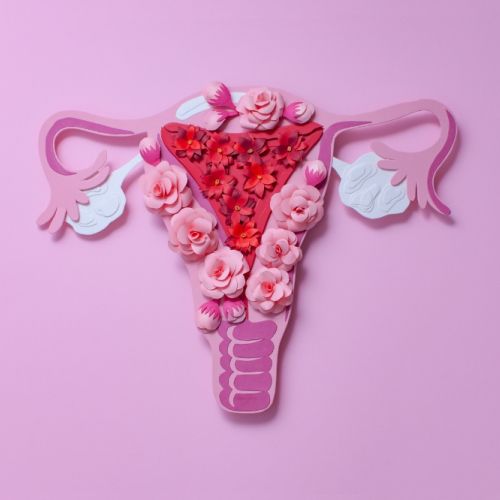Everything You Need to Know About An Embryo Transfer

You’ve gone through all the steps of ovarian stimulation and egg and sperm retrieval. You know there are viable embryos ready to transfer to your womb to hopefully create a healthy pregnancy. But what happens next?
At California Center for Reproductive Health, our team wants you to be educated about every step of in vitro fertilization, especially this essential step of embryo transfer. Here’s what you need to know.
What is embryo transfer?
Embryo transfer is the final stage of the IVF process. Your fertilized egg has been left to grow in a lab for several days and is now ready to be placed in the uterus to implant and result in the birth of a healthy child.
How is an embryo transfer performed?
The transfer process is relatively simple and doesn’t require anesthesia, but some women do receive mild sedation. During the procedure, the viable embryo is loaded into a catheter (thin tube), which we pass through your vagina and cervix and then place in the uterus. The sensation feels very much like a Pap smear.
What are the types of embryo transfer?
Embryo transfer is not a one-size-fits-all procedure. Prior to starting the invitro process, you agreed to one of the following:
Fresh transfer
This is when a fresh embryo that’s never been frozen is deposited into your uterus.
Frozen transfer
A frozen transfer occurs when a frozen embryo from a prior IVF round or donor egg is thawed and transferred to your uterus.
Cleavage stage transfer
This transfer occurs when the cells in the embryo are dividing, but the embryo is not yet growing in size. This stage usually occurs around day three, but may occur a day or two sooner or later. The cleavage stage transfer may be recommended to get an embryo to the optimal environment as quickly as possible in the developmental process to increase its chance of survival.
Blastocyst stage transfer
A blastocyst is an embryo that has developed into a sphere of 60-120 cells. This usually happens around day five, but may occur a few days later. By waiting until day five for transfer, we can better select embryos that have a higher probability for continued development and a successful pregnancy.
A blastocyst can be genetically tested prior to transfer, which can help reduce the risk of miscarriage, avoid certain genetic disorders, and even select the sex of the child.
How many embryos will be transferred?
The number of embryos transferred depends on your wishes, your age, and the number of potentially viable embryos. Transferring just one embryo reduces the risk of being pregnant with multiples, but still results in a high rate of pregnancy.
A transfer of multiple embryos involves placing more than one fertilized egg into your uterus. This type of transfer is highly regulated because of the risk of potential pregnancy complications.
What should I expect after an embryo transfer?
You may have some cramping, bloating, and vaginal discharge following the embryo transfer. Confirmation of pregnancy isn’t possible until two weeks later. You’ll come to our office so we can check to see if the embryo implanted successfully.
IVF is an exciting, but nerve-wracking, process. Embryo transfer is the final stage of the journey and incredibly important in achieving a successful pregnancy. We’re with you every step of the way and ready to answer your questions. We understand how stressful the process can feel and want to help you as you grow your family.
Call the California Center for Reproductive Health if you’re wanting to add to your family, but need a little assistance. We have offices in several areas to serve you: Encino, Alhambra, West Hollywood, and Valencia.
Eliran Mor, MD
Reproductive Endocrinologist located in Encino, Valencia & West Hollywood, CA
FAQ
What does a reproductive endocrinologist and infertility specialist do?
Reproductive endocrinology and Infertility is a sub-specialty of Obstetrics and Gynecology. In addition to managing medical and surgical treatment of disorders of the female reproductive tract, reproductive endocrinologist and infertility (REI) specialists undergo additional years of training to provide fertility treatments using assisted reproductive technology (ART) such as in vitro fertilization.
Reproductive endocrinologists receive board certification by the American Board of Obstetrics and Gynecology in both Obstetrics and Gynecology and Reproductive Endocrinology and Infertility.
When should I see an REI specialist?
In general, patients should consider consulting with an REI specialist after one year of trying unsuccessfully to achieve pregnancy. The chance of conceiving every month is around 20%, therefore after a full year of trying approximately 15% of couples will still not have achieved a pregnancy.
However, if a woman is over the age of 35 it would be reasonable to see a fertility specialist earlier, typically after 6 months of trying.
Other candidates to seek earlier treatment are women who have irregular menses, endometriosis, fibroids, polycystic ovary syndrome (PCOS), women who have had 2 or more miscarriages, or problems with the fallopian tubes (prior ectopic pregnancy).
What are the reasons we are having trouble conceiving?
Approximately 1/3 of the time cause for infertility is a female factor, 1/3 of the time a male factor, and the remaining 1/3 a couples’ factor.
At CCRH, we emphasize the importance of establishing a correct diagnosis. Both partners undergo a comprehensive evaluation including a medical history and physical exam.
Furthremore, the woman’s ovarian reserve is assessed with a pelvic ultrasound and a hormonal profile. A hysterosalpingogram (HSG) will confirm fallopian tube patency and the uterine cavity is free of intracavitary lesions. A semen analysis is also obtained to evaluate for concentration, motility, and morphology of the sperm.
Additional work up is then individualized to direct the best possible treatment option for each couple.
What is IVF? What is the process like?
In vitro fertilization (IVF) is the process that involves fertilization of an egg outside of a woman’s body.
The process starts with fertility drugs prescribed to help stimulate egg development. In your natural cycle, your body is only able to grow one dominant egg, but with stimulation medication we can recruit multiple eggs to continue to grow. After about 8-10 days of stimulation, the eggs are surgically retrieved and then fertilized with sperm in a specialized laboratory. Fertilized eggs are then cultured under a strictly controlled environment within specialized incubators in the IVF laboratory for 3-5 days while they develop as embryos. Finally, embryos (or an embryo) are transferred into the uterine cavity for implantation.
Should I have IVF?
Before deciding if IVF is the right choice, it’s important to sit down with an REI specialist to discuss available treatment options. For some people, other methods such as fertility drugs, intrauterine insemination (IUI) may be the best first choice treatment. At CCRH, we believe each individual couple is unique and not everyone needs IVF.
Is the IVF procedure painful?
While not painful, the fertility medications may some side effects including headaches, hot flashes, mood swings, and bloating. The injection sites may also bruise.
Will IVF guarantee a baby?
Unfortunately, no. Many people think once they start IVF it’s a matter of time that they will be pregnant and have a baby. But according to national statistics per the Society of Assisted Reproduction (SART), on average 40% of assisted reproduction cycles achieve live births in women under age 35. The chances of success then continue to decrease with advancing age.
At CCRH, we employ only evidence-based interventions to ensure patient safety and optimal outcome. While we cannot guarantee a baby, we guarantee that you will receive the best, most advanced, personalized care to help you maximize your chance of a baby.
What is the success rate for IVF?
The average IVF success rate (success measured in live birth rate) using one’s own eggs begins to drop around age 35 and then rapidly after age 40. This is due to the decline in egg quantity and egg quality as a woman ages.
Our clinic’s success rate consistently beats the national average year after year.
Do insurance plans cover infertility treatment? How much does IVF cost?
Individual insurance plans often do not have any coverage for infertility treatments. If you have a group plan, you can call members services to see if they have coverage for infertility (including consultation/workup and IVF).
After your consultation with our REI specialist, one of our dedicated account managers with sit with you to go over the cost of treatment.




